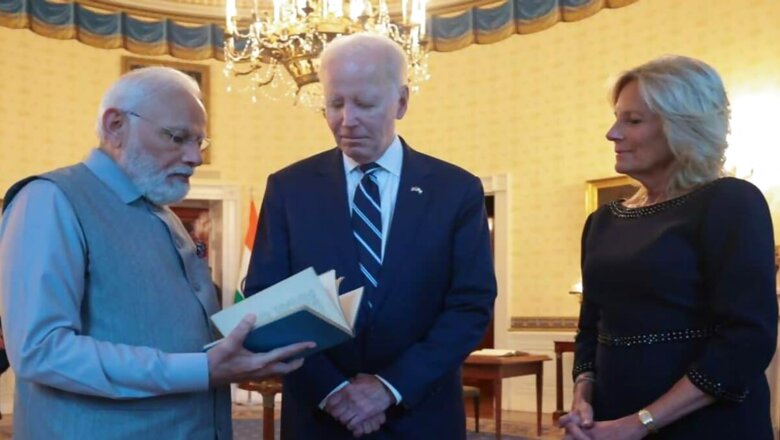
views
On his visit to the United States, Prime Minister Narendra Modi presented several gifts from his side during his meeting with President Joe Biden and First Lady Jill Biden. These included a special handcrafted box for making ten types of donations (dasha daanam) according to Indian culture, made by artists of Jaipur with sandalwood sourced from Karnataka.
This sandalwood box contained many other mesmerising objects. Inside, there was also a small silver idol of Vighnaharta Ganesha, which was prepared by craftsmen of Kolkata. There was a lamp which was also made by artists of Kolkata and a copper plate (tamra-patra) from Uttar Pradesh. As part of the ten types of donation, in tiny silver boxes, there were things like a silver coconut made in Kolkata, scented sandalwood from Mysuru, sesame seeds from Tamil Nadu, a 24-carat gold coin made in Rajasthan, ghee from Punjab, tussar silk cloth made in Jharkhand, rice from Uttarakhand, jaggery from Maharashtra, a 99.5 per cent pure silver coin made in Rajasthan, and salt from Gujarat.
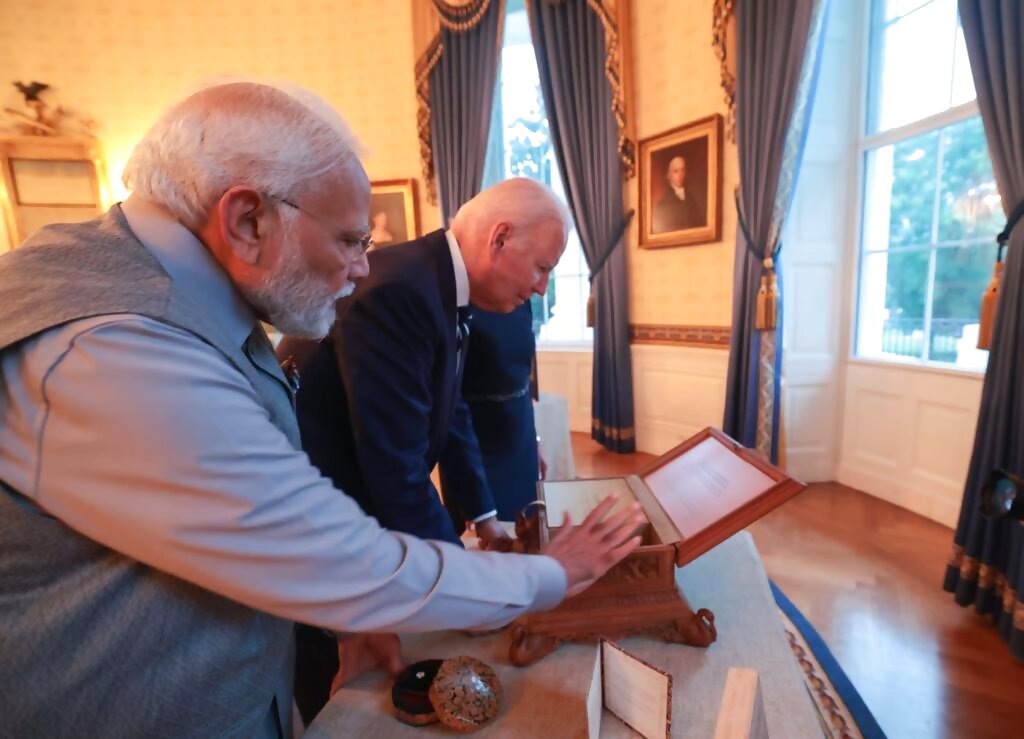
These ten things are part of dasha daanam from Indian culture to celebrate the long life of a person, who is about to witness the full moon for the thousandth time in his life. There are ten types of donations: Gaudaan (donation of cow), Bhudaan (donation of land), Tildaan (donation of sesame seeds), Hiranyadaan (donation of gold), Ajyadaan (donation of ghee), Vastradaan (donation of cloth), Dhanyadaan (donation of food grains), Guddaan (donation of jaggery), Raupyadaan (donation silver), and Lavandaan (donation of salt).
It’s a particularly appropriate gift for the American president according to Indian culture and tradition as Joe Biden will have the opportunity to make such donations on July 3, when he will be seeing the full moon for the thousandth time in his long life. Joe Biden, who became the oldest President of the US, was born on November 20, 1942, and according to Indian astrology, at the age of eighty years and eight months, usually people can see the full form of the moon for the thousandth time in their lives. So, this way, Modi’s gift is a preparation to celebrate Biden’s long life as per Indian culture. What joy Biden would have derived from such a thoughtful gift can be easily judged.
Soon after PM Modi’s US tour ends, Biden can celebrate the momentous occasion of ‘Sahasra Poorna Chandrayam’ on July 3, which will be a strong answer to his detractors, who often mock his old age and poor health. On turning eighty years and about eight months old, he will also be able to pray to Vighnaharta Ganesha, presented by PM Modi inside the box. If Ganesha showers his blessing, Biden can not only continue his work as President in good health but can also try his hand at winning the US Presidential elections in 2024 for a second time.
Prime Minister Modi has not only wished President Biden a long and happy life through his classical gifts but has also drawn the world’s attention towards his literary interests. Biden’s favourite author is William Butler Yeats, whom he often quotes in his speeches. Yeats had a deep connection with India and Indian culture. In the works of Biden’s literary hero Yeats, there is great respect for Indian culture and values, which are constantly facing attacks in the United States, which has given rise to Hinduphobia.
PM Modi had this literary inclination and Biden’s fondness for Yeats in mind when he gifted him a special book. This book is ‘The Ten Principal Upanishads’, published in 1937. This book was written in English by Yeats in collaboration with Purohit Swami, an Indian philosopher. The first edition of this book was published in London, and Modi presented a copy of this vintage text to Biden.
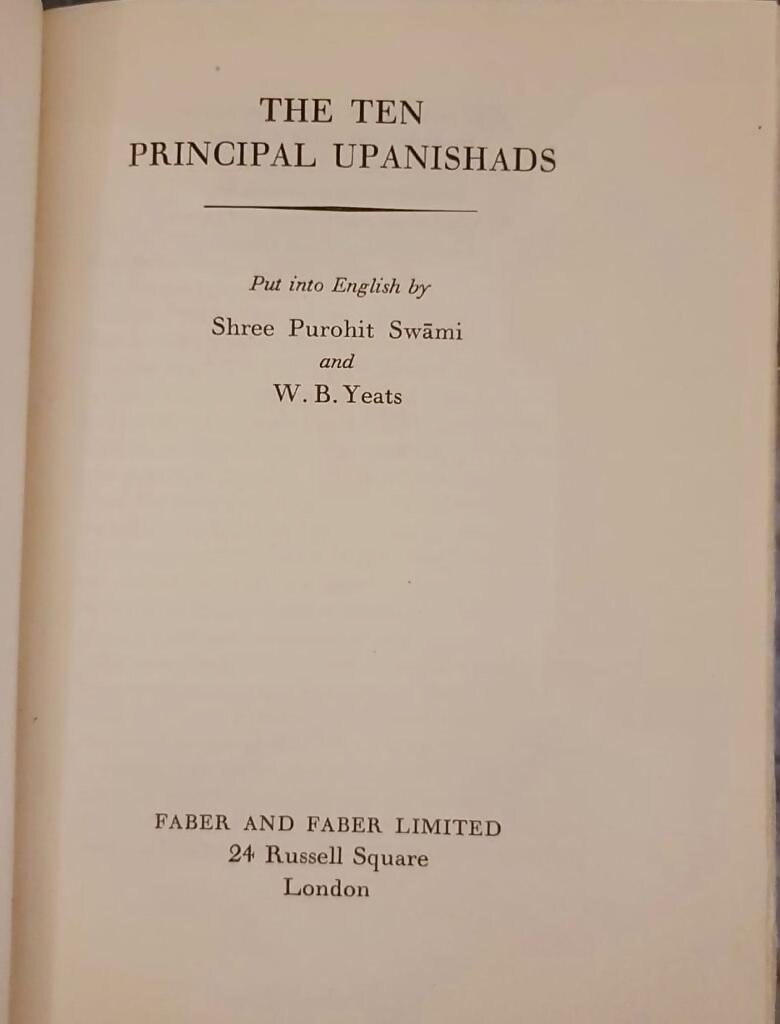
PM Modi also brought a special gift from India for his host Joe’s life partner Jill, which was a seven-and-a-half carat lab-grown green diamond, kept in a handmade papier mâché box. This gift was a glimpse of the past and present of Indian workmanship. While the artists of Kashmir have been famous all over the world for several centuries with their papier mâché craftsmanship, Surat in PM Modi’s home state of Gujarat, renowned as ‘Diamond City’, which has been known for the cutting and polishing of imported diamonds, has now been surging ahead towards becoming a major centre of lab-grown diamonds. This gift, which is a combination of the workmanship of artisans from two states, is also a shining example of the success of PM Modi’s ‘Make in India’ mission.
All these gifts, whether for President Joe Biden or for First Lady Jill, showcase Indian culture, art, continuity and scientific progress of the country, which as the world’s oldest living civilisation has guided it for centuries and is once again taking massive strides to be established as Vishwaguru. Joe Biden himself has been acknowledging the growing power of India frequently, and now is keen to go hand in hand with India under the leadership of PM Modi to meet the major challenges facing the world, whether strategic or natural.
By choosing the book edited by Yeats, Modi has tried to give a big message to the world and America in particular. India’s rapid rise on the world stage under Modi has left a large section unhappy, including opposition leaders within the country and organised gangs of left-wing extremists across the world, and there is a hidden message for them too. This is also a tight slap for those jihadis and conversion rings who created Hinduphobia, and left no stone unturned to spoil the atmosphere even before Modi’s visit to the US, and started building pressure on Biden.
Ireland-born English writer Yeats himself was a big fan of Indian culture and Sanatan Bhava. He not only translated and edited the book on Upanishads in English, but also worked on many aspects of Indian culture. Famous Hindi poet Harivansh Rai Bachchan, the father of superstar Amitabh Bachchan and author of dozens of classics including ‘Madhushala’, wrote a short research piece at Allahabad University before doing his PhD on Yeats as an English teacher. Its title was ‘WB Yeats: His Mind and Art’.
Bachchan went to Cambridge University to pursue a PhD, and in the context of his research on Yeats, he visited important places in Ireland, including Dublin, which had links with Yates, and also met his wife. Bachchan has written in detail about his thoughts about going to Cambridge to do his PhD and Yeats in the third volume of his famous autobiography ‘Basere Se Door’. One can easily gauge while going through this book how much the great English litterateur Yeats was influenced by Hindu eternal values, culture, and Hindutva which has kept India ensconced for centuries and is now on the target of some miscreants who are antagonistic towards it and Modi as India’s representative.
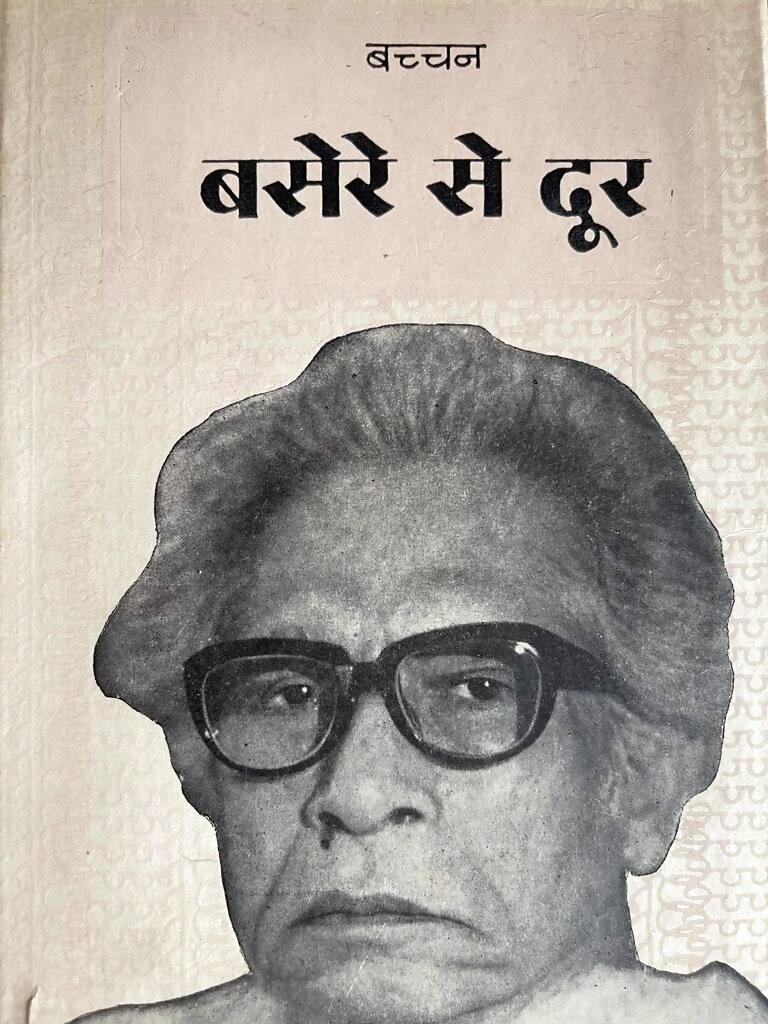
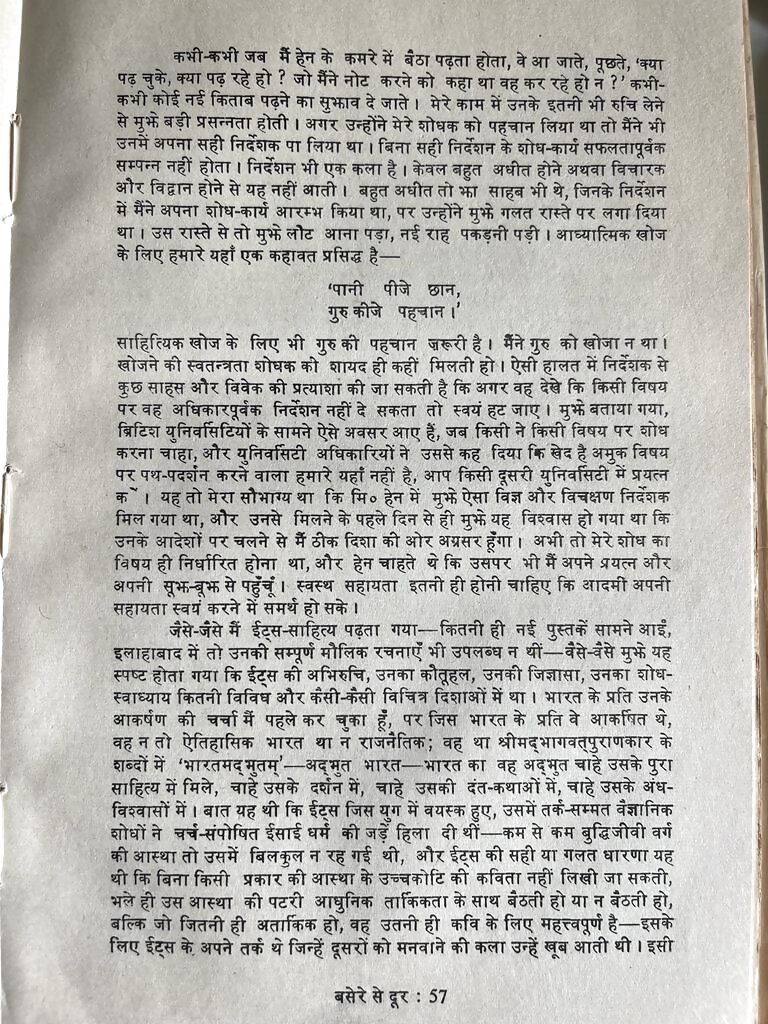
According to the initial discussion Bachchan had with his guide Professor TR Henn after arriving at Cambridge University in 1952 to do his doctorate on Yeats, nearly thirteen years after his death, he wanted to do a PhD on the subject of the influence of Indian philosophy and fables on the great poet. But Henn asked him to broaden the scope of his study. Bachchan finally decided on his research topic, ‘WB Yeats and Occultism’. It usually takes four years for this type of research, but his passion for Yeats and Yeats’s own attachment to Indian values and ideas filled Bachchan with unbridled enthusiasm and he returned to India in 1954 after completing his research work within two years.
Referring to Yeats’ philosophy and thinking in ‘Basere Se Door’, Bachchan writes: “Yeats’s interests, his curiosity, his thirst for knowledge, his research and self-study were so diverse and in such strange directions…The India by which he was allured was neither historical nor political, it was Bharat Adbhutam, according to the Srimad Bhagavata Puran, an incredible India – that wonder of India, whether found in its ancient literature, its philosophy, its legends, or superstitions.”
Among the various chapters that Bachchan wrote in his research paper on Yeats were 1) Yeats and Mohini Chatterji and Tagore, and 2) Yeats and Purohit Swami and the Upanishads. It’s important to note that Bachchan’s research was based on a subject closely linked to the book presented to the US President by PM Modi. The relationship between Yeats and Tagore and their works also finds mention in Bachchan’s research paper. Another name mentioned is Mohini Chatterji, a famous advocate and intellectual, who was initially associated with the Brahmo Samaj and later became a notable member of the Bengal Theosophical Society. He made significant contributions towards connecting the Western world with Eastern culture and philosophy.
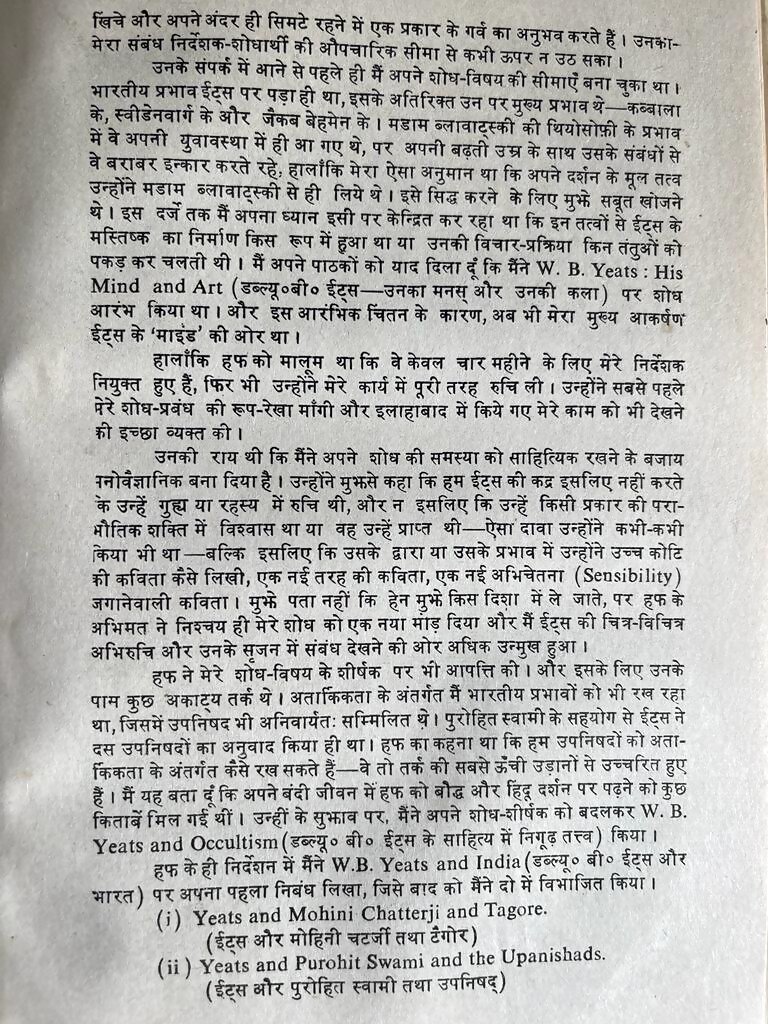
The faith that Yeats had in these eternal values of India, his book on Upanishads is a symbol of the same spirit which Modi has presented to Biden. Yeats’s love for Indian values was also reflected in his association with the seminal work ‘Gitanjali’ by poet Rabindranath Tagore. Yeats, who came in contact through an artist friend with Tagore during his visit to Britain in 1912, not only got Gitanjali published in English under the banner of ‘Indian Society of London’, but also wrote its introduction and improved Tagore’s translation as needed. This English-translated version of Gitanjali won the Nobel Prize for Literature in 1913, the first for a literary work from outside Europe.
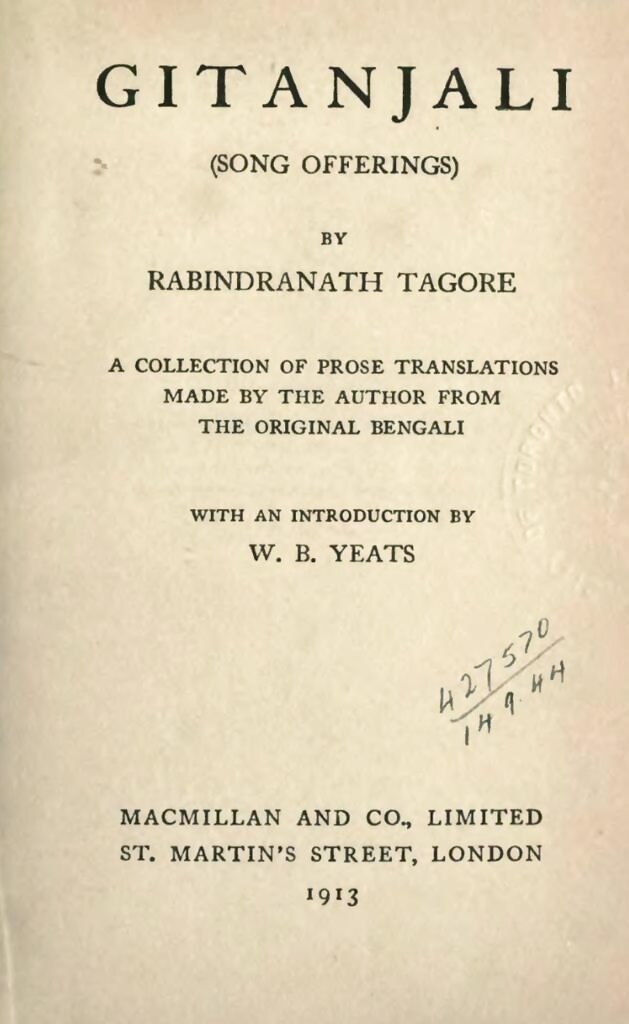
Tagore himself has mentioned this in his autobiography. In fact, between 1907 and 1910, Tagore wrote 156 poems, the motif of which was devotion and which were based on mediaeval songs that had a glimpse of the struggle between spirituality and materialism. Tagore named this collection of poems Gitanjali and presented them to the readers.
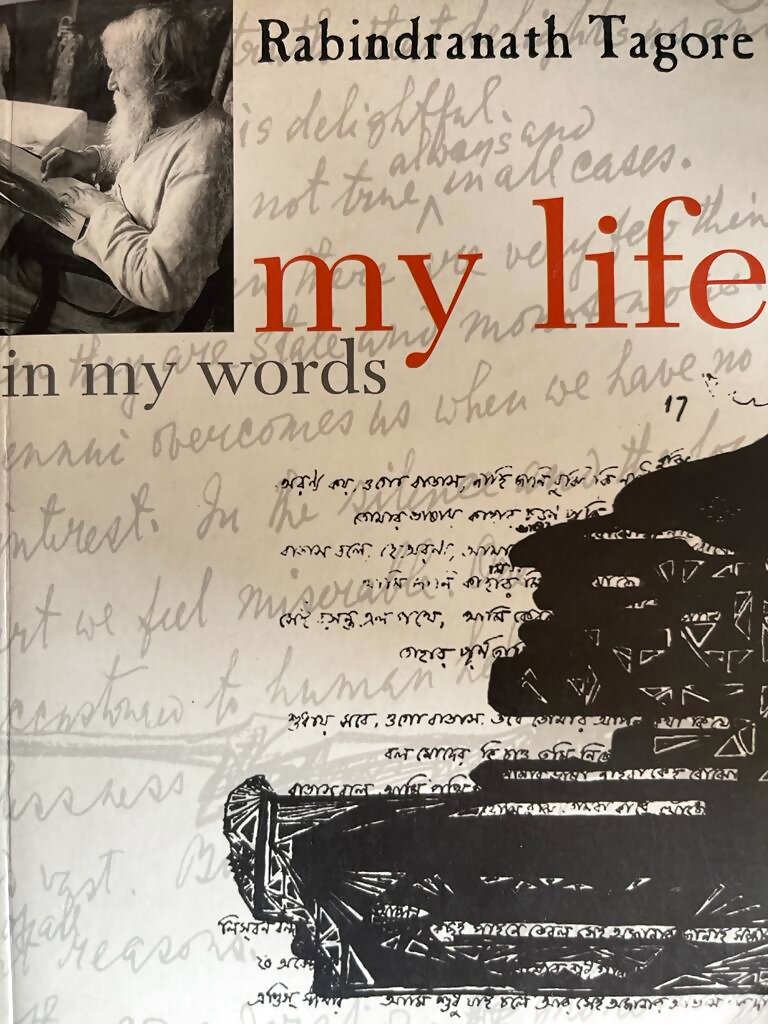
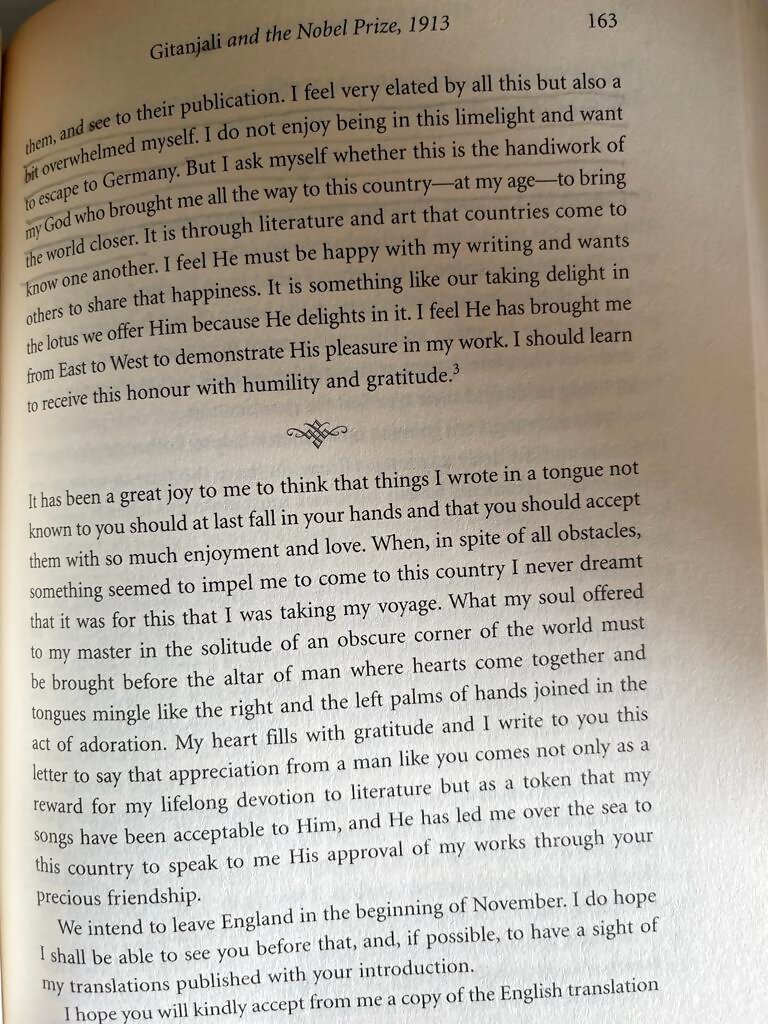
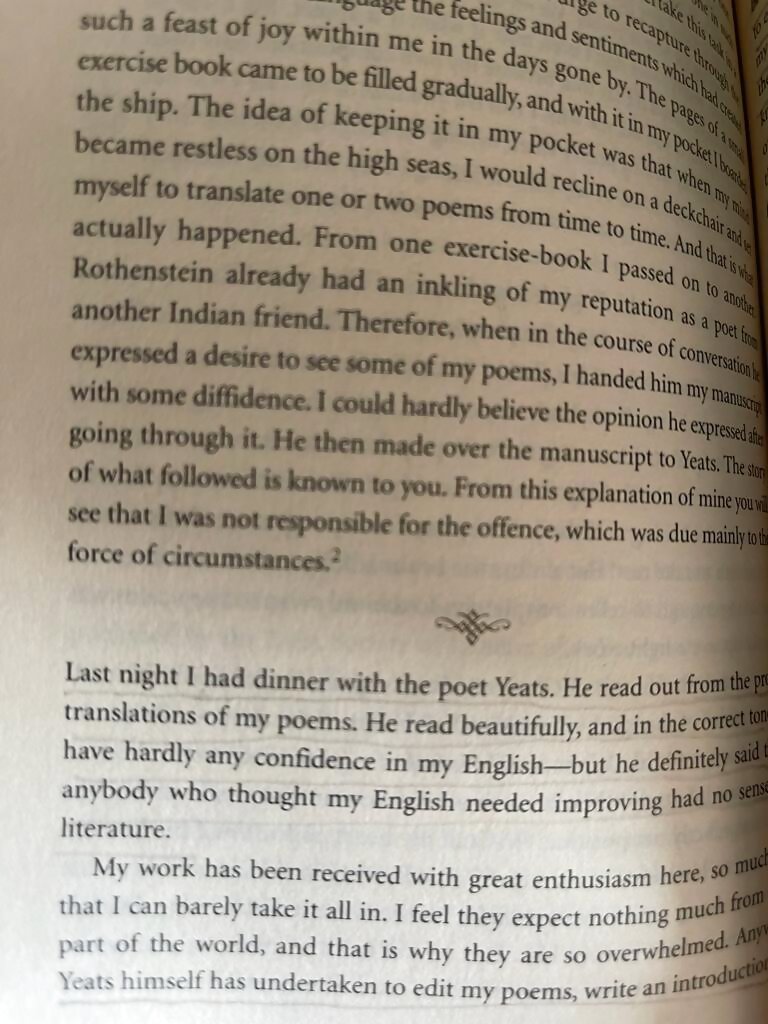
In fact, Tagore was preparing to leave for England on March 19, 1912, but just the night before that his health deteriorated and he had to postpone his journey. It was during this period of illness that he started translating his poems included in Gitanjali into English while staying in Sealdah. By the time the work was done, his health had improved. On May 27, 1912, he departed for London by sea.
On his arrival in London, he met his old friend and famous painter William Rothenstein, renowned for his World War paintings. He showed Rothenstein the English translation of his poems, which he liked, and he introduced Tagore to his friend Yeats. Yeats was most attracted by the timeless spirituality of India, so when he went through Gitanjali, he was elated reading those poems. To his surprise, the spirit of the philosophy of India in which he was deeply interested was visible in these poems. Tagore had some doubts about the accuracy and artistry of his own English translations of the poems included in Gitanjali, but Yeats greatly encouraged him and shared the translations with his literary friends. They all loved these poems.
Yeats himself picked out one hundred and three of Tagore’s poems translated from Bengali into English to publish them and also wrote the preface to the book. Other colleagues of Yeats in London also helped in this, and this collection of poems was published through the Indian Society of London, as ‘Gitanjali (Song Offerings)’. Later, Tagore went to the US, where his son was doing his graduation in agricultural science. After his first visit to America, Tagore returned to England in April 1913 and left for India in September 1913. On November 14, 1913, Tagore received the news that he had been awarded the Nobel Prize for Literature for the English translation of Gitanjali.
An Indian receiving the Nobel Prize for Literature when the country was shackled by British rule was a joyous occasion for citizens, a morale booster, and a proud moment for India. Yeats played a huge role in Tagore getting this honour. Likewise, by presenting the book of Upanishads composed by the same Yeats to the US President, Modi has also tried to remind the world about that connection from one hundred and ten years ago, which is associated with Yeats, whose work Biden has been an admirer of, and this comes at a time when the whole world is once again looking at India with reverence and the countrymen are leaving no stone unturned to take it on the path of becoming Vishwaguru.


















Comments
0 comment